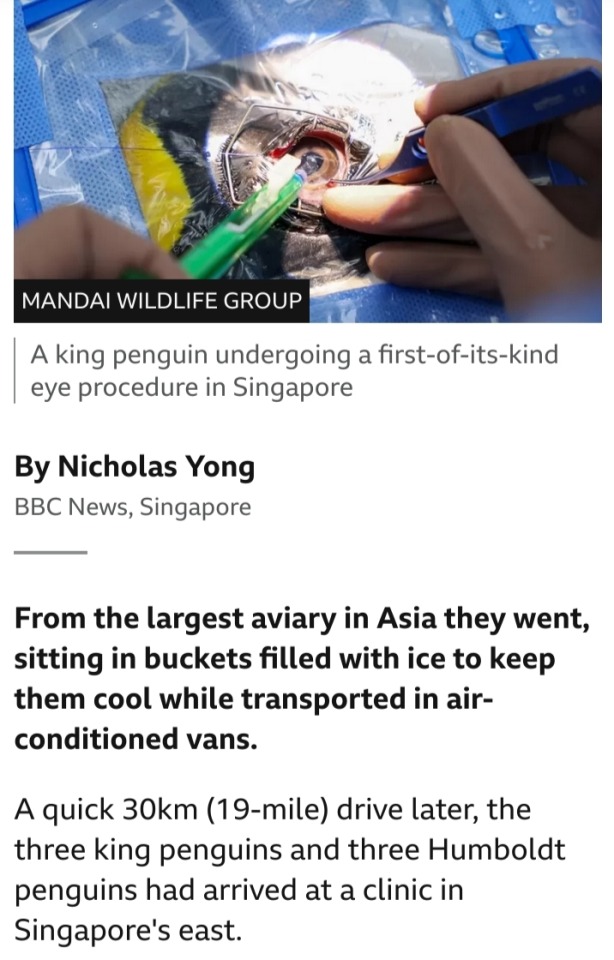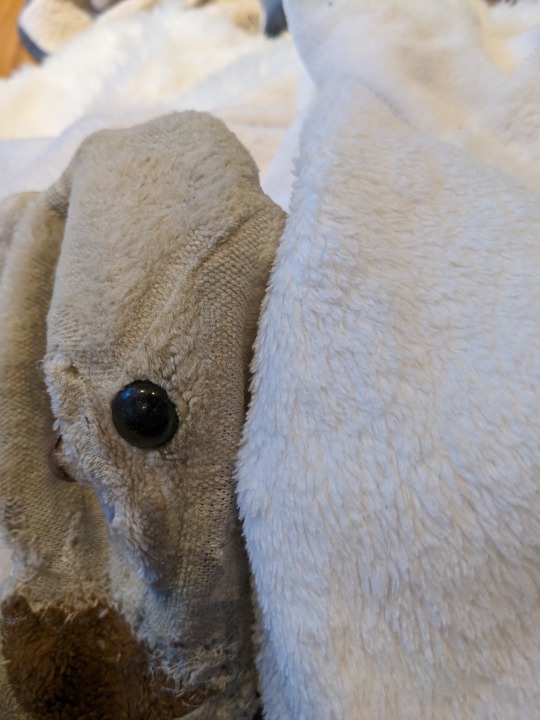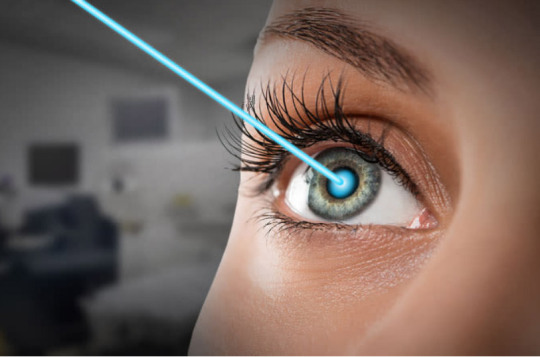#cataract surgery singapore
Text
3 Best Lasik Surgery Clinics in Singapore 2024
Many acknowledge the paramount importance of vision among the senses, recognizing its pivotal role in perceiving the world vividly and functioning effectively in daily life. But sometimes, our eyesight gets worse as we get older or if we have an accident or illness. Wearing glasses or contact lenses can help, but they're not always easy to deal with. That's where LASIK surgery comes in. It's a special kind of surgery that can fix problems with your vision by reshaping your cornea.
Understanding LASIK Surgery:
LASIK, short for Laser-Assisted in Situ Keratomileusis, is a widely acclaimed refractive surgery aimed at correcting vision problems such as nearsightedness, farsightedness, and astigmatism. The procedure involves reshaping the cornea using a highly precise laser, allowing light to properly focus on the retina, thereby improving vision.
The LASIK Procedure:
Pre-Operative Assessment: Before the surgery, patients undergo a thorough eye examination to assess their eligibility for LASIK and determine the appropriate treatment plan.
Surgical Process: During the procedure, the surgeon utilises a specialised laser to reshape the cornea according to the patient's prescription, a process that typically takes only a few minutes per eye.
Recovery and Results: Following LASIK surgery, most patients experience improved vision almost immediately, with minimal discomfort and a quick recovery period. Full visual acuity is typically achieved within a few days to weeks post-surgery.
If you're tired of glasses or fed up with buying contact lenses all the time, LASIK might be a good option for you. But choosing the right place to get LASIK can be tricky, especially with so many choices out there. To help make things easier, here are 3 best LASIK clinics in Singapore that you might want to check out. Each one has its own perks, so you can find the best fit for your budget, location, and specific needs. If you're considering LASIK surgery Singapore, these clinics are worth considering. When searching for a LASIK surgeon Singapore, these clinics offer top-notch services and experienced professionals to guide you through the process.
1. LSC Eye Clinic

For over 15 years, LSC Eye Clinic in Singapore has been a beacon of hope for those seeking enhanced vision through advanced refractive laser procedures such as LASIK eye surgery. Boasting a satisfied clientele exceeding 85,000 individuals, the clinic has garnered acclaim for its commitment to excellence. Continuously advancing its medical technology and staff expertise, LSC Eye Clinic now presents an expanded array of specialised treatments catering to various eye conditions.
Beyond its renowned LASIK offerings, the clinic introduces cutting-edge solutions including ZEISS SMILE® Pro vision correction, Epi-LASIK Advanced Surface Ablation, LASIK Xtra for corneal fortification, Implantable Collamer Lenses (ICL), and more. From addressing common issues like pterygium and dry eyes to complex conditions such as macular hole and keratoconus, LSC Eye Clinic strives to ensure optimal eye health for all ages.
Recognizing the paramount importance of vision, the clinic is steadfast in its mission to enable everyone to perceive the world with clarity and precision.
In addition to its exceptional eye care services, LSC Eye Clinic extends its medical expertise to encompass endocrinology through SMG Diabetes, alongside a specialised Thyroid and Endocrine Clinic, ensuring comprehensive healthcare for all patients. From childhood to senior years, the clinic caters to individuals across the lifespan, specialising in Laser Vision Correction for various refractive errors and Small Incision Cataract Surgery.
Available eye treatments:
ReLEx® SMILE
LASIK
PRK/LASEK/Epi-LASEK
Age-related Eye Conditions
2. Dr Natasha Lim Eye Centre

Dr. Natasha Lim Eye Centre is renowned for its expertise in laser cataract and LASIK surgeries, led by Dr. Lim herself, an esteemed refractive surgeon. Holding fellowship status with the Royal College of Ophthalmologists in London, Dr. Lim specialises in laser refractive and cataract surgeries, ensuring top-tier care for her patients.
Upon consultation with Dr. Lim, patients undergo thorough assessments to determine the necessity for surgery and the most suitable lens options tailored to their specific needs. Services offered at the clinic encompass a wide spectrum, including traditional LASIK surgery, surface ablation techniques such as LASEK, Epi-LASIK, and PRK, as well as advanced bladeless femtosecond laser cataract surgery and diabetic eye disease treatment.
Under the expert guidance of Dr. Lim, patients can entrust their vision concerns to her passionate and proficient care, knowing they are on the path to achieving clearer vision and improved eye health.
At Dr. Natasha Lim Eye Centre, patients receive comprehensive care and guidance for a range of eye conditions, from mild to severe. Dr. Lim, serving as the Senior Consultant and Medical Director, earned her medical degree from the University of Nottingham Medical School in the UK. With extensive training and accolades in ophthalmology, she is a fellowship-trained refractive surgeon with a particular focus on Laser Refractive and Refractive Cataract Surgeries. Additionally, she is certified in VISX excimer laser and IntraLase femtosecond laser procedures in both Singapore and the UK.
Available eye treatments:
LASIK
Epi-LASIK, PRK
Implantable Contact Lens
Micro-incision cataract surgery
Bladeless femtosecond laser cataract surgery
Presbyopia “Lao Hua” Correction
Eyelid surgery
For more information, visit Dr. Natasha Lim Eye Centre website: https://www.drnatashalim.com/, or contact via email at [email protected], or call at +65 65702220.
3. Atlas Eye Specialist Centre

Atlas Eye Specialist Centre distinguishes itself as a renowned establishment in the field of eye care, committed to delivering top-tier, evidence-based, and FDA-approved treatments for various ophthalmological conditions. Catering to individuals dealing with nearsightedness, farsightedness, and astigmatism, the centre offers a range of laser vision correction options, including ReLEx® SMILE, Wavefront Bladeless LASIK, and Wavefront PRK. Recognizing the uniqueness of each patient's eyes, the clinic's specialists meticulously assess which procedure aligns best with their visual requirements and lifestyle. Factors such as eye prescription level and corneal thickness guide recommendations; for example, PRK may be suggested for those with lower prescriptions and thinner corneas, while ReLEx® SMILE and LASIK surgery serve as suitable alternatives for others. Additionally, the centre presents various alternatives like ICL, refractive lens exchange, and monovision laser vision correction. From the initial consultation to post-operative care, Atlas Eye Specialist Centre maintains a patient-centric approach, ensuring comprehensive and personalised service throughout the treatment journey.
Emphasising its commitment to excellence, Atlas Eye Specialist Centre boasts a team of internationally trained healthcare professionals dedicated to offering evidence-based medical and surgical solutions for vision correction and eye ailments. Its state-of-the-art surgical facility prioritises the highest standards of vision and eye healthcare, leveraging cutting-edge technology and medical expertise to prioritise patient well-being. Moreover, the centre provides tailored treatments, including Key-hole Surgical Techniques for both Refractive Surgery and Advanced Cataract Surgery, further underscoring its dedication to meeting individual patient needs with precision and care.
Available eye treatments:
LASIK surgery – laser vision correction
Cataract surgery
Children’s eye treatments
Conclusion:
In short, LASIK surgery is a standout solution for vision issues like nearsightedness and farsightedness. It's a precise procedure with quick recovery, often providing immediate and lasting results. By using advanced lasers to reshape the cornea, LASIK offers a distinct way to improve eyesight. The article highlights reputable LASIK clinics in Singapore, making the procedure more accessible. LASIK presents a unique opportunity to enhance vision without the need for glasses or contacts, improving daily life for many.
#cataract surgery singapore#cataract surgeon singapore#cataract surgery in singapore#singapore cataract surgery
0 notes
Text
Top Bladeless Laser Cataract Surgery Singapore 2024
If you're looking for information on cataract surgery in Singapore or a cataract surgeon in Singapore, it's essential to conduct thorough research and consider various factors such as reputation, experience, and patient reviews. Here are some steps you can take to find a reputable cataract surgeon or clinic in Singapore:

Research Online: Use search engines to find cataract surgeons or clinics in Singapore. Look for official websites, reviews on healthcare platforms, and any articles or blog posts that may provide insights into the quality of care provided.
Check Credentials: Ensure that the surgeon you're considering is board-certified and has the necessary qualifications and experience in performing cataract surgery. You can usually find this information on their clinic website or through professional directories.
Read Patient Reviews: Look for patient testimonials or reviews to get an idea of other people's experiences with the surgeon or clinic. Pay attention to both positive and negative feedback to make a well-informed decision.
Consultation: Schedule consultations with one or more cataract surgeons to discuss your condition, treatment options, and any concerns you may have. This will also give you an opportunity to evaluate the surgeon's communication style and expertise.

Ask for Referrals: Seek recommendations from friends, family members, or your primary care physician who may have undergone cataract surgery or have knowledge of reputable surgeons in Singapore.
Consider Technology and Facilities: Look for a surgeon or clinic that utilizes advanced technology and has modern facilities to ensure the highest standard of care and optimal surgical outcomes.
Insurance Coverage: Check if the surgeon or clinic accepts your health insurance plan and inquire about any out-of-pocket costs associated with the surgery.
Trust Your Instincts: Ultimately, trust your instincts and choose a surgeon or clinic that makes you feel comfortable, confident, and well-informed about your treatment plan.

0 notes
Text
A Bird's-Eye Perspective on Cataract Treatment
A cataract is the most common explanation for vision impairment in humans. Affected are eight out of ten Singaporeans who are 60 years of age or older.
A cataract can develop in the eye's distinct focus point, reducing the amount of light that reaches the eye.
If the problem isn't handled, it may result in a mild to major blindness that might affect your level of satisfaction personally.
Accuracy of the Cataract
If you believe you may get cataracts, be aware of the following symptoms:
Vision that is overcast, foggy, or fluffy
The splendid lighting makes evening time driving possibly dangerous.
Issues with daylight or bulb glare
Various insights
Diminished limit with respect to variety vision
Routinely changing the solution for glasses
Can a Cataract Be Healed?
If a cataract is discovered early enough, it may very probably be accurately and easily removed, restoring eyesight.
The best treatment option for cataracts is surgery. It is not possible to use prescription drugs or corrective spectacles.
What is the standard procedure for cataract surgery?
The cataract expert makes an incision in the cornea of the eye. An ultrasonic test is inserted into the obfuscated focal point (cataract) in order to clear it. After that, ultrasonic energy (cataract) is used to isolate the fuzzy focus point. To remove the remaining eye tissue, a little cylinder is employed.
From that point forward, a counterfeit intraocular focal point (IOL) is put to supplant the focal point that was harmed. Nearsightedness, hyperopia, astigmatism, and presbyopia can be in every way treated utilizing IOLs. The patient gets a specific sort and force of IOL embed.
What is the New Cycle in Cataract Surgery?
There are right now choices for bladeless and PC helped cataract surgery.
The various entry points are made by the cataract specialist utilizing laser gear. By making the roundabout cut and corneal entry point more unsurprising and under better control, this raises the treatment's wellbeing.
Less ultrasonic energy is expected to isolate the cataractous focal point when a femtosecond laser is utilized, bringing down the chance of injury and issues.
Since the counterfeit focal point embed is all the more painstakingly situated and arranged, more precise cuts may likewise hold the embedded IOL sufficiently.
To fulfill the one of a kind needs of every patient, we give a scope of premium fake focal points, including toric, multifocal, and aspheric focal points. These contemporary intraocular focal points can be utilized to treat nearsightedness and other visual refractive irregularities.
(presbyopia, astigmatism, and foolishness) (Lao Hua).
Cataract Surgery: Is It Safe?
In Singapore, in excess of 30,000 cataract medical procedures are performed yearly.
One of the most secure and best day treatments is still cataract surgery. The whole cycle requires forty minutes.
How might I recover from my cataract surgery quicker?
Because of the way that the bladeless system does exclude the utilization of any sharp gear, patients who go through the clever cataract surgery habitually recuperate all the more rapidly. In the wake of mending, patients can work on their vision.
A Report on Cataract Surgery Secondary effects?
At the point when done by a certified and proficient specialist, cataract surgery is an exceptionally protected and effective treatment. Vision obscuring can once in a while result from back case opacification (PCO), a blurring of the focal point container holding the focal point set up. This minor issue could be settled with a fast YAG Laser Capsulotomy short term laser surgery.
Vision Rebuilding at the Lang Eye Center
Over 80% of Singaporeans more than 60 have cataracts. Serious cataracts are more challenging to treat and bound to foster issues.
The gifted eye specialist Dr. Leonard Ang has led many effective cataract medical procedures and has a history of progress in cataract surgery singapore. His subject matter is refractive cataract surgery, which empowers patients to oversee nearsightedness ("childishness"), astigmatism ("lao hua"), and presbyopia ("lao hua") thus upgrade their vision while wearing less perusing and distance glasses.
0 notes
Text

18 March 2023






#king penguins#Humboldt penguins#Mandai Wildlife Group (MWG)#American College of Veterinary Ophthalmologists#Singapore's Jurong Bird Park#penguins#wildlife#Singapore#cataracts#cataract surgery#veterinary medicine#veterinary ophthalmology
3 notes
·
View notes
Text
Nova Eye Centre - How to Save Money for LASIK and Cataract Surgery in Singapore
Part 1: Setting Your Sights on Affordable LASIK and Cataract Surgery
If you're dreaming of clearer vision through LASIK or need cataract surgery cost in Singapore, you're in the right place. These procedures can be life-changing, but they often come with a hefty price tag. Fear not! We've got seven fantastic ways to help you save money for these eye surgeries without breaking the bank.

1. Craft a Vision-Focused Budget
Let's start with the basics. Create a budget specifically tailored to your LASIK or cataract surgery goal. Map out your monthly income and expenses, and identify areas where you can cut back. Channel those extra dollars directly into your surgery fund. It's like giving your financial vision a 20/20 upgrade.
Crafting a vision-focused budget for LASIK and cataract surgery cost in Singapore is essential to ensure that individuals prioritise and plan for these significant eye care expenses. These surgeries can significantly improve one's quality of life by enhancing vision, reducing dependence on corrective lenses, and preventing further deterioration.
By allocating a dedicated budget, individuals can set realistic financial goals, explore insurance coverage options, and save accordingly. This proactive approach not only eases the financial burden but also underscores the importance of maintaining good eye health. Ultimately, a vision-focused budget empowers individuals to make informed decisions and invest in their visual well-being.
2. Explore Insurance Options
Check if your health insurance covers any part for LASIK or cataract surgery cost. While these procedures are often considered elective, there might be exceptions or supplemental plans available. It's worth a phone call to your insurance provider to explore your options.
3. HSA or FSA Contributions
If you have a Health Savings Account (HSA) or Flexible Spending Account (FSA), you're sitting on a goldmine for medical expenses. These accounts allow you to set aside pre-tax money for healthcare costs, including LASIK and cataract surgery cost. Max out your contributions to maximise your savings.
Part 2: Smart Saving Strategies
Now, let's dig deeper into some strategic saving tactics.
4. Open a Dedicated Savings Account
Create a separate savings account exclusively for your cataract and LASIK surgery cost in Singapore.This not only keeps your savings organised but also prevents you from accidentally spending it on other expenses. Consider an account with a higher interest rate to help your money grow over time.
5. Set Milestone Goals
Break down your savings goal into manageable milestones. Celebrate each small victory along the way to keep your motivation high. For instance, when you reach 25% of your target, treat yourself to a little something special – just make sure it doesn't dent your surgery fund for LASIK surgery cost in Singapore!
6. Side Hustle for Extra Cash
Think of side hustles as your secret weapon for boosting your surgery fund for LASIK surgery cost in Singapore. Whether it's freelance work, selling items online, or offering your skills, the extra income can add up fast. Plus, it'll make reaching your goal all the more satisfying.
Part 3: Explore Financial Assistance
Now, let's explore options for financial assistance.
7. Investigate Financing and Payment Plans
Many LASIK and cataract surgery cost centres in Singapore offer financing options or flexible payment plans. These can help you spread the cost over several months or even years, making the surgeries more manageable on your budget. Just be sure to check the terms and interest rates before committing.

Now that you're equipped with these savvy strategies, it's time to take action and make your vision goals a reality. Start saving for LASIK or cataract surgery cost today and schedule a consultation with a reputable eye specialist in Singapore. Your clearer, brighter future awaits!
So, there you have it – seven practical ways to save money for LASIK and cataract surgery cost in Singapore. With a little financial finesse and determination, you'll be seeing the world through new eyes in no time. Happy saving so contact Nova Eye Centre if you’re ready for the surgery.
Read More: https://valbonneyoga.com/how-to-save-money-for-lasik-and-cataract-surgery-in-singapore/
0 notes
Text
Mimming from Singapore
A couple months ago I received an email from Mimming's person in Singapore. Mimming is an almost 40 year old teddy bear, and she's been very well loved... and hugged.
This is what Mimming looked like when she was young:

And this is what she looked like at the start of 2023:


As you can see, she lost a lot of weight and fur from hugs over the years. Her eyes have cataracts (you'll see those better later), her nose is dangling due to muzzle shrinkage, and she has some pretty significant wounds she usually keeps under her shirt. But she's still a very cuddly bear with an endearing expression.
Her person was hoping to get Mimming recovered in new fur, so she could be hugged and have adventures for at least 40 more years. A new nose and new eyes were under consideration, and we agreed starting with a spa (especially since her stuffing was so compressed, was probably in order. So... Mimming found a flight with her buddy Little Mimming to keep her company (you'll see her later) and headed across the Pacific to CA. While Mimming is well travelled, this was a first solo Pacific flight, and so it was bit scary, hence the company. It actually took less than a week for her to arrive!
She started with her bubble bath, that way new fur would match her cleaned fur color.

You can see her cataracts, particularly in her right eye, and how loose and chipped her nose is here.
Next was deciding if she would get a new nose and eyes, or keep her originals. Turns out, there were many nose options. Smooth like nose, flocked/velvety, size differences:




Her person opted for a new, velvety, triangular nose. For her eyes, there was really only one option, new or not. I can usually get pretty good color matches, but Mimming's eyes had also faded, so new eyes would be a touch brighter. Once eyes or a nose come out, they can't go back in, and with recovering it's best to remove them before recovering, so this was a decision that needed to be made before fur choice. Here's the eye option next to her original eye:

Mimming's person opted for two new eyes. We agreed to preserve her old eyes and nose in her heart with a bit of her stuffing. But first, she needed new fur. Here were some of the white fur options:



Mimming's person went with the thick white faux fur, and surgery proceeded. For her brown patch, I had furs to match all of the white fur options, so we were all set there.
Here's her heart being made and installed:



And here are the first photos of Mimming in all new fur. She still has open seams, so her chubbiness can be adjusted:




While she sits naturally like in her baby photos, she can also lay flat like she could when she arrived. Chubbiness approved, Mimming got dressed and went outside for a photo shoot. She was well traveled, but had never been to California, and she wanted some photos as souvenirs. Little Mimming joined her for the photo shoot (those were the first tulips of the season):


And those adorable knitted overalls? Those are Mimming's regular travel clothes that she arrived in. Good thing that knit stretches. I particularly liked the little teddy bear buttons to hold the straps.
Mimming and Little Mimming flew home and again, it was a fast trip, just 5 days! Here they are safe and sound, albeit a little jet lagged, with their friends:

Her person wrote:
Thank you so much!! She looks amazing! We are so happy we got to spend the rest of our lifetime with her - another 40+ years!! Thank you Doctor Beth for taking great care of her. You’re such a blessing to all of us! Praying for your good health and good life. Stay happy and blessed!
#stuffed animal repair#teddy bear repair#teddy bears#stuffed animals#stuffed animal cleaning#teddy bear cleaning#teddy bear clothes#mimming#singapore
4K notes
·
View notes
Text
10 Questions To Ask An Eye Clinic or Specialist in Singapore
Having healthy eyes is essential to overall well-being. Due to this, getting the proper medical care is necessary. Selecting an eye clinic or eye specialist can be challenging, even in Singapore, where access to healthcare is easy. However, asking the correct questions helps guarantee you receive suitable care for your needs. Discover the vital questions to ask an eye clinic or specialist.

10 Questions to Ask Your Eye Clinic and Specialist
1. What Services Do You Offer?
Understanding the range of services provided is fundamental. Enquire about eye examinations, treatments for conditions like cataracts or glaucoma, refractive surgery options such as LASIK, and access to diagnostic technologies. An eye clinic's varying services reflect its capacity to address various eye health concerns.
2. Are Your Specialists Accredited?
Inquire about the qualifications and accreditations of the eye specialists. Ensure they are registered with the Singapore Medical Council and affiliated with professional organisations. Accredited specialists guarantee adherence to industry standards and practices, assuring patients of quality care.
3. What Are Your Clinic's Operating Hours?
Accessibility is key when scheduling appointments or seeking urgent care. Clarify the clinic's operating hours, including weekends and public holidays, and inquire about emergency eye care provisions. Opting for a clinic with flexible hours ensures convenience and timely access to treatments.
4. Do You Accept Insurance Plans?
Understanding the clinic's payment policies and insurance coverage is essential for financial planning. Inquire whether they accept major health insurance plans or Medisave for specific procedures. Clear information on payment options and potential out-of-pocket expenses helps patients make informed decisions about their eye care.
5. How Do You Ensure Patient Safety and Hygiene?
Inquire about the clinic's infection control measures, sterilisation protocols, and adherence to safety standards. Confirm if the eye clinic in Singapore follows stringent hygiene practices, including disinfection of equipment and premises. Patient safety should be a priority in any healthcare setting, ensuring a risk-free environment for consultations and procedures.

6. What Precautions Do You Take for COVID-19?
Amidst the ongoing pandemic, understanding the clinic's COVID-19 precautions is essential. Inquire about screening protocols, mandatory mask-wearing policies, and sanitation measures implemented to mitigate transmission risks. Clear communication on pandemic-related safety measures instil confidence in patients seeking eye care services.
7. Can I Access Teleconsultation Services?
Inquire about teleconsultation options for non-emergency queries or follow-up appointments. Virtual consultations offer convenience and flexibility, especially for patients with mobility issues or those seeking remote advice. Understanding the availability and scope of teleconsultation services enhances accessibility to eye care.
8. What Post-Procedure Care Do You Provide?
Post-operative care is essential in the recovery of patients undergoing surgical procedures or treatments. Inquire about the clinic's post-procedure follow-up protocols, medication prescriptions, and potential complications to watch out for. Guidance on post-operative care ensures patients experience a smooth recovery process.
9. How Do You Handle Patient Feedback and Concerns?
Effective communication channels for addressing patient feedback and concerns foster trust and transparency. Inquire about the clinic's feedback mechanisms, complaint resolution procedures, and avenues for escalating issues if necessary. An open and responsive approach to patient feedback reflects a commitment to service delivery.
10. Can You Provide Patient Testimonials or Referrals?
Seeking insights from previous patients can offer perspectives on the clinic's quality of care and patient experience. Inquire whether the clinic can provide patient testimonials or referrals for further validation. Hearing firsthand accounts from patients helps gauge the clinic's reputation and reliability.
Conclusion
It takes initiative and discernment to navigate the eye care landscape in Singapore. Patients can make informed decisions about their eye health when they ask the right questions when interacting with eye clinics or specialists in Singapore. An examination guarantees a satisfying experience for eye care, from evaluating service offerings to understanding safety procedures and post-operative care.
Contact Nova Eye Centre to start prioritising your eye health today.
1 note
·
View note
Text
Comprehensive Guide to Eye Hospitals: Ensuring Vision Health

Introduction
Eye health is a crucial aspect of overall well-being, yet it is often overlooked until problems become severe. Eye hospitals play a vital role in maintaining and restoring vision, offering specialized care for a wide range of ocular conditions. This article delves into the importance of eye hospitals, the services they provide, and highlights some of the top eye hospitals globally known for their exceptional care.
Importance of Eye Hospitals
Eye hospitals are specialized medical institutions dedicated to diagnosing, treating, and managing eye diseases and vision disorders. Unlike general hospitals, eye hospitals are equipped with advanced technology and staffed by ophthalmologists and optometrists who have extensive training in eye care. Find the best eye hospital in Chennai for top-tier vision care and advanced treatments.
The significance of these hospitals lies in their ability to provide:
Early Detection and Treatment: Many eye conditions, such as glaucoma and macular degeneration, progress slowly and can be effectively managed if detected early.
Specialized Surgical Procedures: Eye hospitals perform intricate surgeries like cataract removal, LASIK, and corneal transplants with high precision.
Comprehensive Eye Exams: Routine eye exams can detect vision problems and underlying health issues, such as diabetes and hypertension.
Emergency Eye Care: Eye hospitals are equipped to handle emergencies, such as retinal detachments, eye infections, and injuries.
Services Offered
Eye hospitals offer a wide range of services to cater to different aspects of eye health. These include:
General Ophthalmology: Routine eye exams, vision testing, and basic eye care.
Pediatric Ophthalmology: Specialized care for children's eye problems, including congenital conditions.
Cataract Surgery: Removal of cloudy lenses and replacement with artificial intraocular lenses.
LASIK and Refractive Surgery: Corrective surgeries to reduce dependence on glasses and contact lenses.
Glaucoma Treatment: Management of intraocular pressure to prevent optic nerve damage.
Retina Services: Treatment for retinal diseases, such as diabetic retinopathy and macular degeneration.
Corneal Services: Care for corneal diseases and transplantation.
Oculoplasty: Cosmetic and reconstructive surgery around the eyes.
Optical Services: Prescription glasses and contact lenses.
Low Vision Rehabilitation: Assistance for patients with significant vision impairment.
Top Eye Hospitals Worldwide
1. Bascom Palmer Eye Institute (USA)
Known for its cutting-edge research and advanced treatments, Bascom Palmer Eye Institute is often ranked as the top eye hospital in the United States.
2. Moorfields Eye Hospital (UK)
Located in London, Moorfields Eye Hospital is a pioneer in eye care, providing comprehensive services and conducting significant research in ophthalmology.
3. Aravind Eye Care System (India)
Aravind Eye Care System is renowned for its innovative model, offering high-quality eye care to millions of patients, particularly in underserved regions.
4. Wills Eye Hospital (USA)
Based in Philadelphia, Wills Eye Hospital is recognized for its excellence in clinical care, education, and research in ophthalmology.
5. Singapore National Eye Centre (Singapore)
This center is a leading institution in Asia, known for its expertise in a wide range of eye conditions and advanced surgical techniques.
6. Royal Victorian Eye and Ear Hospital (Australia)
Situated in Melbourne, this hospital specializes in both eye and ear conditions, providing comprehensive care and pioneering research.
7. L V Prasad Eye Institute (India)
L V Prasad Eye Institute in Hyderabad is a globally recognized center for its patient care, research, and education in ophthalmology.
8. Jules Stein Eye Institute (USA)
Affiliated with UCLA, Jules Stein Eye Institute is famous for its research programs and advanced treatment options in ophthalmology.
9. Tokyo Medical University Hospital (Japan)
This hospital offers state-of-the-art eye care services and is known for its advanced surgical techniques and research contributions.
10. Hong Kong Eye Hospital (Hong Kong)
Renowned for its comprehensive eye care services and research, Hong Kong Eye Hospital is a leading institution in the region.
Conclusion
Eye hospitals are indispensable for maintaining and restoring vision health. They provide specialized care, advanced treatments, and cutting-edge research to tackle a wide range of ocular conditions. By choosing the right eye hospital, patients can ensure they receive the best possible care for their vision needs. Regular visits to these institutions can prevent many eye problems from progressing and help maintain good vision throughout life. Explore the top 10 eye hospitals in Chennai for exceptional vision care and advanced treatments.
0 notes
Text
Discovering Healing Havens: A Guide to Medical Tourism
Reasons for Seeking Medical Care Abroad
One of the primary factors driving the growth of surgical tourism is the high cost of healthcare in developed countries. For many elective and non-emergency procedures, the costs in the United States, Canada, United Kingdom and other Western nations have become prohibitively expensive for average citizens and even those with health insurance. Medical tourists are able to travel abroad and receive treatments at a fraction of the price they would pay at home. In many destination countries, the overall package of medical care, travel, lodging and other ancillary costs is 30-90% cheaper than equivalent treatment in a developed country.
Another motivation is shorter wait times. In countries with universal healthcare systems, there can be lengthy waits for non-emergency surgeries and procedures. The average wait time for a hip replacement in Canada is over 6 months, while knee replacements in the UK have 18-month waits. By traveling abroad, medical tourists are able to get treated more quickly without delay. India, Thailand and other popular destinations generally have minimal to no wait times.
Medical Specialties and Treatments Sought
While originally centered around dental care and cosmetic surgeries, medical tourism has expanded to cover a wide range of specialties and treatments. Some of the most common include:
- Cardiology - Angioplasty, angiography, bypass surgery and stent placement are popular cardiological procedures sought by medical tourists.
- Orthopedics - Knee replacement, hip replacement, spinal surgery and arthroscopic procedures feature prominently. The use of robotics and computer navigation systems allows for less invasive techniques.
- Dentistry - Dental crowns, veneers, dental implants and oral surgery make up a major portion of surgical tourism, especially to Thailand, Hungary and Mexico.
- Fertility Treatment - In vitro fertilization (IVF) costs a fraction abroad versus in the Western world. Countries like India, Thailand and Cyprus attract fertility tourists.
- Cosmetic Surgery - Tummy tucks, breast augmentations, face lifts and other aesthetic procedures drive traffic to countries such as Thailand, South Korea and Costa Rica.
- Ophthalmology - Cataract removal and lens replacement surgeries are commonly sought abroad alongside refractive procedures like LASIK eye surgery.
Popular Medical Tourist Destinations
Certain countries have built strong reputations as top destinations in medical tourism. Some of the leaders are:
India - Advanced facilities, JCI-accredited hospitals, large pool of English-speaking doctors and very low costs have made India the world's fastest growing market. The Indian healthcare sector earns over $3 billion yearly from medical tourists.
Thailand - Known especially for quality dental and cosmetic work at bargain prices. Thais are perceived as being quite skillful with bedside manner. Hospitals meet international standards.
Singapore - Highly developed medical infrastructure, including the promotion of integrated surgical tourism clusters with hotels. Singapore attracts Asian patients as well as those from the West.
Malaysia - Healthcare quality equals that of Western countries at half the cost or less. Malaysia Medical Council regulates facilities, and English is widely spoken in the healthcare industry.
Mexico - Popular for procedures like dental work, bariatric surgery, and eye/laser corrective surgeries due to competitive pricing. Many accredited JCI hospitals near the US border.
Challenges and Risks of Medical Tourism
While surgical tourism provides considerable benefits, certain risks and challenges exist that need to be considered. Post-surgical complications may arise, and standards of aftercare can vary in different countries. The legal recourse and patient rights available may not equal what patients expect at home. Medical records and follow-ups may be difficult between multiple healthcare systems. Travel itself poses some health threats like the transmission of new infections or bacterial strains. Cultural differences, language barriers or unfamiliar practices can affect the levels of comfort experienced abroad. Medical tourists need to carefully vet facilities and providers through organizations that accredit and certify hospitals overseas. With prudence, most risks can be minimized to allow patients to reap the rewards of affordable, timely medical care in internationally accredited centers worldwide.
Growth Outlook
The global medical tourism industry was estimated to be worth around $10-40 billion worldwide as per different surveys. Advanced Asia-Pacific destinations capture approximately 45-65% market share of the entire pie while the remainder is split between Latin America, Eastern Europe, Middle East, Africa and other regions. India alone serves an estimated 150,000-200,000 medical tourists every year currently. Going forward, the worldwide numbers are forecasted to grow substantially in the coming years. Driven by factors like the shrinking value of most foreign currencies against the USD, an expanding medical infrastructure abroad, more trade agreements lowering travel barriers, and persistent high healthcare costs domestically – surgical tourism is emerging as a multi-billion dollar industry worldwide with potential for further significant increase in the future if present trends continue.
0 notes
Text
What Are the Risks of Cataract Surgery in Singapore?
Cataract surgery is one of the most common and successful surgical procedures worldwide, including in Singapore. It involves removing the cloudy lens of the eye and replacing it with an artificial one. Although it is generally safe, like any surgery, cataract surgery carries some risks. Understanding the risks of cataract Singapore can help patients make informed decisions and know what to expect.
Understanding Cataract Surgery
1. Pre-surgery Preparation
Comprehensive Eye Examination: Before surgery, a thorough eye exam is conducted to assess the health of the eye and determine the extent of the cataract.
Discussion of Medical History and Medications: The surgeon reviews the patient's medical history and current medications to identify any potential complications or necessary adjustments.
2. Surgical Procedure
Use of Local Anesthesia: To numb the eye and prevent pain during surgery.
Small Incision in the Eye: A tiny cut is made to access the cloudy lens.
Removal of the Cloudy Lens: The cataract-affected lens is removed, often using ultrasound waves.
Insertion of an Artificial Intraocular Lens (IOL): A clear artificial lens is implanted to restore vision.
3. Post-surgery Care
Follow-up Visits: Regular check-ups to monitor healing and address any issues.
Use of Prescribed Eye Drops: Medications to prevent infection and reduce inflammation.
Avoiding Strenuous Activities: To prevent pressure on the eye and ensure proper healing.
Common Risks of Cataract Surgery

1. Infection (Endophthalmitis)
Description: Endophthalmitis is a severe infection that occurs inside the eye, usually resulting from bacteria or fungi that enter the eye during or after surgery. This condition can cause significant damage to the eye's internal structures if not promptly treated.
Symptoms: Patients may experience intense eye pain, redness, swelling, decreased vision, and sensitivity to light. These symptoms typically arise within a few days after surgery.
Prevention: To prevent infection, surgeons employ sterile techniques during the procedure, including the use of sterilised instruments and wearing sterile gloves and masks. Postoperatively, patients are prescribed antibiotic eye drops to further minimise the risk of infection.
2. Inflammation
Description: Postoperative inflammation is common and involves swelling and redness of the eye tissues. It is the body's natural response to surgery.
Symptoms: Symptoms include discomfort, eye redness, swelling, and blurred vision. These symptoms can interfere with the healing process if not managed properly.
Treatment: Anti-inflammatory eye drops or oral medications are typically prescribed to reduce inflammation. In some cases, more potent steroid medications may be necessary to control severe inflammation.
3. Increased Intraocular Pressure (IOP)
Description: Elevated intraocular pressure can occur after cataract surgery, potentially leading to glaucoma if not managed. High IOP can damage the optic nerve and result in vision loss.
Symptoms: Symptoms of increased IOP include eye pain, headache, blurred vision, and nausea. Some patients may not experience any symptoms, making regular check-ups crucial.
Management: Treatment involves medications such as eye drops or oral drugs that help lower eye pressure. Regular monitoring by an eye doctor is essential to ensure that the pressure remains within a safe range.
4. Posterior Capsule Opacification (PCO)
Description: PCO, sometimes referred to as a "secondary cataract," occurs when the back of the lens capsule, which holds the artificial lens in place, becomes cloudy. This can happen months or even years after the initial surgery.
Symptoms: Patients may notice a gradual return of blurred vision, glare, and difficulty seeing clearly, similar to the symptoms experienced with the original cataract.
Treatment: YAG laser capsulotomy is a quick, painless outpatient procedure used to treat PCO. The laser creates a small opening in the cloudy capsule, restoring clear vision almost immediately.
5. Retinal Detachment
Description: Retinal detachment is a serious condition where the retina, the light-sensitive tissue at the back of the eye, peels away from its underlying layer of support tissue. If not promptly treated, it can lead to permanent vision loss.
Symptoms: Warning signs include sudden flashes of light, an increase in floaters (small spots or threads in the field of vision), and a shadow or curtain effect over part of the visual field.
Treatment: Retinal detachment requires urgent surgical intervention to reattach the retina. Procedures may include pneumatic retinopexy, scleral buckling, or vitrectomy, depending on the severity and location of the detachment.
6. Dropped Nucleus or Lens Fragments
Description: During cataract surgery, pieces of the cataract or lens fragments may fall into the back of the eye. This can happen if the lens is not fully removed or if it disintegrates during extraction.
Symptoms: Patients may experience blurred vision, discomfort, and potentially inflammation if the fragments cause irritation.
Treatment: Additional surgery, often a vitrectomy, is required to remove these fragments. The procedure involves using specialised instruments to safely extract the lens pieces from the eye, ensuring proper healing and restoration of vision.
Less Common Risks

1. Corneal Edema
Description: Swelling of the cornea, the clear front surface of the eye.
Symptoms: Blurred vision and eye discomfort.
Treatment: Eye drops to reduce swelling or, in severe cases, additional surgery.
2. Dislocation of the Intraocular Lens (IOL)
Description: The artificial lens moves out of its intended position.
Symptoms: Blurred or double vision.
Treatment: Surgery to reposition the lens correctly.
3. Cystoid Macular Edema (CME)
Description: Swelling in the central part of the retina, called the macula.
Symptoms: Blurred or distorted central vision.
Treatment: Anti-inflammatory medications or injections to reduce swelling.
Rare but Serious Risks
1. Loss of Vision
Description: Complete blindness in the operated eye, a very rare outcome.
Causes: Severe infection, retinal detachment, or bleeding.
Prevention: Prompt treatment of complications and regular follow-ups to catch issues early.
2. Haemorrhage
Description: Bleeding inside the eye, which can occur due to surgical trauma or pre-existing conditions.
Symptoms: Sudden vision loss and eye pain.
Treatment: Immediate medical attention and possibly surgery to address the bleeding.
3. Anaesthesia Complications
Description: Adverse reactions to local anaesthesia used during the procedure.
Symptoms: Allergic reactions or breathing difficulties.
Management: Thorough pre-surgery screening to ensure safe anaesthesia use.
Preventive Measures
Patients and surgeons can take several steps to minimise the risks of Singapore cataract surgery:
Choose an Experienced Surgeon: Ensure your surgeon has extensive experience and a good track record.
Follow Pre-surgery Instructions: Proper preparation, such as stopping certain medications, can reduce the risk of complications.
Post-surgery Care: Adhere to all post-operative instructions, including using prescribed eye drops and avoiding strenuous activities.
Report Any Issues Immediately: Early detection of problems can prevent severe complications.
Conclusion
While cataract Singapore surgery is generally safe and effective, understanding the potential risks is crucial for informed decision-making. By following preventive measures and choosing an experienced surgeon, patients can significantly reduce the likelihood of complications and enjoy the benefits of improved vision. If you have any concerns, discuss them with the best eye care professional - Dr Natasha Lim, Phone: +65 6570 2220 to ensure the best possible outcome.
0 notes
Photo

Advanced treatment for laser cataract surgery in Singapore 2023. It is a comfortable, gentle, accurate and highly customised treatment. Make an appointment with us!
0 notes
Text
What Steps Should I Take to Get Ready for Cataract Surgery in Singapore?
If your vision is becoming dim and changing your prescription doesn't help, it could be cataracts hindering your eyesight.
As eyes age, various factors can cause vision to dim. One common explanation is cataracts, which occur when the eye's natural lens becomes "cloudy."
To achieve clear vision, light enters the eye through the pupil and passes through the lens, which then focuses it onto the retina. The lens is typically transparent, composed of protein and water. However, with age, proteins can clump together, causing the lens to become cloudy in certain areas. Over time, this cloudy region, known as a cataract, gradually obscures vision. Additional risk factors include:
Excessive exposure to sunlight and UV radiation
Long-term use of steroids
Diabetes
Radiation, infection, inflammation, or prior eye surgery
Smoking
Children may also develop cataracts due to visual injuries, genetic factors, or infections contracted during pregnancy.
SYMPTOMS OF CATARACTS
Cloudy or hazy vision is one of the most common complaints from individuals with cataracts. Bright colors may appear dull or muted, and complaints of glare, halos, poor night vision, or double vision are also common.
CARING FOR CATARACTS
If you suspect you or a loved one may have a cataract, see an eye specialist at the eye clinic singapore international. A comprehensive eye examination will determine if there is another factor causing the vision to become cloudy. Although emergency cataract surgery is rare, you should not wait until your vision is severely impaired. Cataract surgery is a safe and effective procedure that can improve activities such as driving and sports.
Cataract surgery is typically performed in a single day. It involves removing the cloudy lens and replacing it with an intraocular lens implant, a clear artificial lens. After cataract surgery, refractive errors such as myopia, hyperopia, astigmatism, and even presbyopia can be corrected.
RISKS ASSOCIATED WITH CATARACT SURGERY
One risk is infection, which occurs in approximately 1 out of 1,000 procedures. Additional potential complications include bleeding, a rupture in the capsular bag during surgery, postoperative retinal detachment, and unexpected refractive outcomes.
THE PROCEDURE
Your eye will be numbed with anesthetic eye drops, and the cataract will be easier to remove with the use of dilating eye drops. The procedure typically takes 10 to 30 minutes and is virtually painless. Although you will be mildly sedated, you will be able to hear your surgeon speaking to you.
POST-OPERATIVE CARE
To minimize inadvertent harm while sleeping, a clear protective shield will be placed over the operated eye and worn at night for about one to two weeks. You can return home once the numbing effects wear off after about an hour.
Feeling a mild foreign body sensation after cataract surgery is normal. Visual improvement occurs almost immediately, and by the next morning, most patients can read the smallest characters on the distance chart without glasses. The type of intraocular lens implanted determines the wearer's ability to read without glasses.
After surgery, you will need to use eye drops containing steroids and antibiotics for about a month.
Cataracts do not return, but over time, the capsular bag holding the lens implant may become cloudy in a web-like pattern due to the migration of residual cells. Using topical anesthesia, a painless laser procedure can be used to treat this. The laser is used to create a central hole in the opaque bag to restore vision.
0 notes
Text
Myopia Research - Wealth, Locations, Demographics
Types of people, location and wealth.
Most common in Asia
Most common in ages 20 - 29 & over 70s
Main reason Myopia is common in Asia is due to educational pressure and environments
Location & Demographics
Myopia prevalence remains higher in Asia (60%) compared with Europe (40%) using cycloplegic refraction examinations. Studies reporting on non-cycloplegic measurements show exceptionally high myopia prevalence rates in school children in East Asia (73%), and high rates in North America (42%)
The recent myopia boom is attributed primarily to the educational pressure in Asian countries, which prompts children to read for long hours, often under poor lighting and on computer screens. This practice severely limits the time spent outdoors and reduces exposure to sunlight and far vision.
We identified 49 eligible population-based studies including 210,512 individuals aged 0 to 96 years reporting the prevalence of myopia from 16 Asian countries or regions. The pooled prevalence estimate of myopia was highest at 47.3% (95% confidence interval [CI], 19.3, 75.2) in Asians aged 20 to 29 years. There was a U-shaped relationship between year of birth and myopia prevalence. The cohort effect especially marked in urban Asian communities such as Singapore and South Korea. The prevalence of myopia of 36.3% (95%CI 27.6, 45.0) was higher in adults aged more than 70 years compared with middle-aged adults, which revealed nuclear cataract-myopia shifts.
This is a snapshot of the rate of myopia seen in children based on recent studies. (Right). More recent studies indicate that myopic macular degeneration is becoming a serious ocular health issue, where it has been reported one of the major causes of permanent blindness in Rotterdam11, Copenhagen12, China13, Chinese Taipei14, and Japan15.
Hong Kong - 62%
Singapore - 53%
China - 47%
USA - 42%
Australia - 31%
UK - 23%
Chile - 17%
South Africa - 10%
Iran - 8%
In the United States, about 40% of adults are short-sighted, up from 25% in 1971. Rates have similarly soared in the UK. But their situation pales in comparison with that of teens and young adults in South Korea, Taiwan and mainland China, whose prevalence rates are between 84% and 97%. If current trends continue, half the world's population will be short-sighted by 2050. And the problem seems to be spreading at a faster rate than ever.
East Asia’s high levels of childhood myopia, also known as nearsightedness, has long been a mystery: It affects as many as 90% of urban 18-year-olds. Researchers have identified possible causes including intensive studying, less time spent outside—even the Chinese language itself. And now a new study has made the mystery even stranger.
Wealth
“We could not explain much of the large variation in prevalence of clinically significant myopia between middle income Shaanxi and low-income Gansu,” the researchers concluded in the study, this week in the Journal of the American Academy of Ophthalmology.
What exactly is it about life in more rural areas that protects children against myopia? The use of blackboards is one possibility, according to the study. In lower-income schools, students own fewer books and are more likely to use blackboards in the classroom, which appeared to have a “protective effect” against myopia, possibly because they require more focusing at a distance.
“It’s amazing that we’ve accepted such huge numbers of people having a condition that requires correction in order for them to perform normally,” he said. “We’re so good at correcting myopia with glasses, contacts, or laser surgery, we’ve come to think of it as simply an optical inconvenience.”
In many countries, however, nothing could be further from the truth, said Nathan G. Congdon, MD, MPH, at Sun Yat-sen University in Guangzhou, China. “In China, only 20% of children who need glasses actually have them, in part, because parents and authorities worry that glasses will harm children’s vision. Providing spectacles for kids not only helps their vision, but we’ve also found that it has a significant impact on their educational outcomes,” he said.
1 note
·
View note
Text
Ngày cuối năm 2023
The Precious of Being Alive
Vậy là lại sắp trôi qua một năm rồi. Nghĩ lại thì nhanh nhưng thực là cũng có nhiều việc đã xảy ra.
Mình và Tôm Cốm, 3 mẹ con cùng nhau có kỳ nghỉ cuối năm ở Premier Residences Phú Quốc rồi ngày 30 sẽ về ở Hà Nội và chia tay năm 2023 với chồng và bố mẹ.
Năm qua đã là một năm vất vả với rất nhiều những chuyến đi, nhiều hơn cả những điều mà mình đã dự tính. Nhưng mình đã cố gắng rất nhiều và vẫn luôn như vậy, sẽ quyết tâm làm những gì mà mình muốn làm, cảm thấy cần làm.
Lên chức rồi lại xuống chức, nhưng thu nhập có tăng lên và những điều mong muốn cũng đã xảy ra: mụ Chi bị đuổi việc và có CEO mới hiệu quả hơn.
Có lẽ năm 2023 đúng là ko phải một năm quá may mắn, mà cũng nhiều vất vả, nhiều suy nghĩ, nhiều thay đổi. Nhiều trận ốm khó đề phòng nữa. Nhưng cũng như mọi khi, mình vẫn tìm thấy niềm vui và may mắn nho nhỏ trong cuộc sống hàng ngày. Chưa đến nỗi có lúc nào cảm thấy là không may cả, hoặc giờ cũng quên mất rồi.
Dù sao vẫn cảm thấy tự hào vì những gì đã làm được.
Năm nay quá nhiều những chuyến đi:
- Tháng 1 cả nhà cùng đi Thái Lan
- Singapore 2 lần: tháng 4 (hội thảo Zeiss) và 6 (APACRS)
- 30/4-1/5 đi FLC
- Tháng 5 Đà Nẵng lớp Tôm
- Tháng 6 đi Anh
- Tháng 7: Alma Nha Trang
- Tháng 8: Đà Nẵng hội thảo Khô Mắt
- Tháng 9: Quảng Ngãi lần đầu
- Tháng 10: Nha Trang Hội Nghị Ngành; cuối tháng Flamingo Cát Bà. Quảng Ngãi lần 2
- Tháng 11: Ninh Binh. Quảng Ngãi lần 3
- Tháng 12: Phú Quốc
Năm qua mình đã làm được những gì?
- Chuẩn bị mua căn hộ đầu tiên là của mình.
- Chuyển sang Times City, ổn định cuộc sống ở đây
- Tôm Cốm chuyển trường, bắt đầu năm học mới ổn
- Tôm Cốm tập luyện thể thao
- Đã bước đầu học mổ Khúc xạ, mổ được vài ca ở DND.
- Học xong khoá mổ khúc xạ của London Vision Clinic
- Được nhận vào khoá học về Cataract và Refractive Surgery của Ulster University
- Đã có thể mổ Phaco ở những nơi máy móc khó khăn hơn như Quảng Ngãi. Cảm giác tự tin hơn và ca nào mình cũng mổ được.
Quan trọng nhất là gia đình vẫn luôn bên nhau. Tôm Cốm yêu mình và biết rằng mình yêu chúng nó, dù có như thế nào.
Năm 2024 sẽ làm gì:
- Cùng Alina mở rộng ra Hà Nội
- Mở bv ở tỉnh cùng Australia Healthcare Group
- Dựng chương trình và làm giảng viên cho VinUni
- Hoàn thành khoá học Cataract and Refractive surgery ở Ulster University
- Hoàn thành chứng chỉ lớp PT khúc xạ
- Hoàn thành Master in surgery of Clinical Ophthalmology ở Edinburgh
- Đi Ấn học mổ khúc xạ + cắt dịch kính
- Đi Anh mổ mắt, nhận bằng, học Therapeutic Refractive surgery.
- Sửa như ý và chuyển về căn hộ mới CỦA MÌNH
- Tập yoga 3b/1 tuần
- Ăn uống healthy
- Ngủ đủ và giữ thói quen tốt liên quan giấc ngủ
- Chăm sóc da
- Khám sk định kỳ và giữ gìn sk
- Dạy Tôm Cốm nấu ăn và làm việc nhà nhiều hơn
- Làm một số việc cho bố mẹ
Nguyên tắc quan trọng nhất của năm nay: dù có làm gì cũng dừng lúc 9h tối, chuẩn bị để đi ngủ và có một giấc ngủ ngon.
Enjoy cuộc sống nha!
0 notes
Text
What is Lasik Surgery and What Does It Do For You?
Do you know about LASIK surgery and how it can help you? You might have seen advertisements about them on Google or Facebook ads. Well we are here to share with you all about LASIK surgery in Singapore and what it does for you.

LASIK is the short form for Laser-Assisted In Situ Keratomileusis. I can only imagine how hard of a tough time you just had reading that. It is not easy to pronounce the whole phrase and hence the acronym as it makes it easier to share without having to struggle pronouncing it.
Well for starters, LASIK is a type of eye surgery that you can go through where a laser is used to sculpt the cornea of your eye to improve short-sighted vision known as myopia and far-sighted vision which is known as hyperopia.

The cornea is a transparent part that is at the front of your eye that allows light into your eyeball and retina which allows you to see. It is similar to a camera’s lens in a way. The image on your retina becomes fuzzy when your cornea begins to go out of shape.
LASIK will help to correct your misshapen cornea by using a laser to cut off the surface of your cornea and create a thin flap. An additional laser which is known as the excimer laser will come into play and help to shape the middle section of your cornea. After your cornea has been reshaped, the flap will be put back in place to cover your cornea. After it has been done, it naturally adheres to your cornea creating your eye’s own bandage.

This surgery is a 10 to 15 minutes day surgery that requires only a topical anaesthetic eye drops. It will be within a day or two but maximum within a week at most before improvements are made. You can then return back to your life as per normal however, you will be required to stay off all water and contact sports for a month.
Are There Any Side Effects That Comes Along With LASIK
For a short and simple answer it will be yes. For the longer answer it is still a yes. These effects are minimal, bearable and are often temporary. Listed below are the side effects.
Dry Eyes
This is mainly caused by the flap that was created and the effect of the laser on the cornea which will cut certain corneal nerves which are responsible for the normal tear production. It will take around a month before it resolves by itself.
Night Vision
It will be normal to see glares and starbursts at night, it is especially common for those with high myopia or high astigmatism. It will go away gradually over a period of time which will be around nine months to about a year.
Discomfort
Feeling discomfort and itchiness will be normal and is part of the healing and it will automatically go away by itself within a few hours after the procedure. Sleeping and constantly closing your eyes will help alleviate the sensation. For the itch it should disappear by itself in a few days, using the artificial tears eye drops which are preservative free will help.
What Are The Risks?
This is a very commonly asked question as everyone is surely concerned. Like many other surgeries out there which involve risk, LASIK also has its own set of risks which is listed as below.
Thinning of your cornea
This is an extremely rare risk however it does happen. Basically the cornea becomes irregular and unstable in a condition called post-LASIK ectasia.
Problems with future surgery
In the cataract surgery, an artificial lens is replaced with the one in your eye to help your vision be clearer. As your cornea is permanently changed due to LASIK, the calculations of the lens tend to be more difficult as it requires a normal cornea to get the correct reading. You may end up wearing glasses after you are done with your cataract surgery, which you would not have otherwise to do.
Wrong eye pressure readings
Having increased pressure on your eyeball is a condition called glaucoma. This can damage your optic nerve which can lead to poor eyesight or the worst case scenario is blindness. LASIK makes it harder to read your eye pressure which can lead to an inaccurate reading.
Relapsing
There is a chance of your old degree returning back especially if your myopia is extremely high. However odds are, that the improvements are permanent and only require minor adjustments due to the shape of your cornea which can still be altered by LASIK
Who Is LASIK For?
Just like any other procedure, there are candidates who are more ideal than others for LASIK.
LASIK is for you if:
You are at least 18 years of age
You have degrees that have been stabilised for at least a year
You have no severe health conditions and are currently in good health

If you are younger than 18 it is highly likely that your eye-sight has yet to stabilise. However if you are in your 40s, you may be required to get reading glasses even with LASIK as you age.
LASIK is not for you if:
You have very high refractive error, for example if you have myopia of more than 1000 degrees, hyperopia of more than 400 degrees and astigmatism of more than 400 degrees. The results tend to be less satisfactory and predictable with patients that have the conditions mentioned above.
Have severe dry eye syndrome
Have corneas that are thin relative to the degree of improvement you would wish to get.
Having any existing eye injuries or diseases such as cataract, glaucoma, daibetic eyes or retina problems.
If you are currently pregnant or nursing as hormonal changes occur during pregnancy or nursing and can cause your vision to fluctuate. You may be required to wait around six months after your pregnancy and nursing before going for LASIK

In conclusion, any surgery requires lots of thinking and research. Do the necessary research and ensure that you are suitable for the surgery. Once you are about to undergo the surgery remember to stay relaxed and have complete trust and faith in your LASIK surgeon to complete your LASIK surgery. We hope this article has helped to clear any doubts that you may have had with LASIK.
0 notes